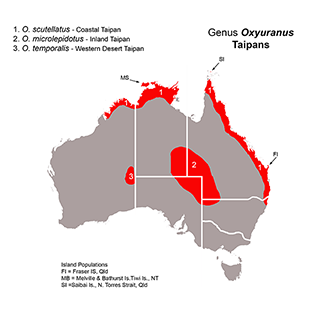Introduction
Snake bites are a serious medical emergency that can happen in different settings, especially in regions where serpents prevail. In Australia alone, there are read more various types of poisonous snakes such Check over here as the Tiger Snake, Eastern Brown Snake, and King Brown Snake. Recognizing how to effectively handle snake attacks is important for anyone that spends time outdoors or lives in rural areas. This post will discover detailed first aid administration strategies for snake bites and detail finest methods for reacting to these incidents.
First Aid Administration of Snake Bites: Best Practices for Every Situation
When dealing with a serpent bite, the preliminary response can dramatically influence the sufferer's end result. Immediate activity is crucial because quick clinical intervention usually figures out the extent of injury or survival rate. Right here are important first aid concepts to keep in mind:
Stay Calm: The initial step in managing a serpent bite is to stay calm. Panic can elevate heart rates and increase the spread of venom throughout the body. Call for Help: Dial emergency solutions instantly. Offer them with your place and any kind of information concerning the serpent if possible. Keep the Target Still: Urge the target to remain as still as possible. Motion can increase blood flow, accelerating venom absorption right into the bloodstream. Positioning: If practical, place the affected limb at or listed below heart level. This positioning helps decrease poison spread. Remove Tight Clothing: Loosen any kind of garments or fashion jewelry around the bite website; swelling might happen rapidly after a serpent bite. Do Not Apply Ice/Cold Packs: In contrast to common belief, applying ice can worsen cells damage and ought to be avoided.Understanding Serpent Types and Their Habitats
Tiger Serpents and Their Habitat
Tiger serpents (Notechis scutatus) are amongst Australia's most notorious venomous snakes due to their hostile nature and potent venom.
- Habitat: They usually inhabit seaside regions, wetlands, and areas with thick plant life like marshes and swamps. Risks: Recognition of regional tiger snake habitats can minimize the danger of coming across one unexpectedly.
Eastern Brown Snakes: A Considerable Threat
The Eastern Brown Serpent (Pseudonaja textilis) is an additional highly poisonous species located throughout eastern Australia.
- Habitat: This snake prospers in city locations, farming lands, and grasslands. Behavior: Recognized for its fast strikes when endangered, recognizing its habits might help mitigate encounters.
Recognizing Signs of Serpent Bites
Identifying signs and symptoms at an early stage can boost opportunities of effective therapy:
Local Symptoms:- Pain and swelling around the bite site Discoloration or bruising
- Nausea or vomiting Difficulty breathing Signs of shock (e.g., pale skin, quick heartbeat)
First Aid Protocols for Particular Snake Bites
First Aid for Tiger Snake Bite
In instance of a tiger serpent bite:
First Aid for Eastern Brown Snake Bite
For an eastern brownish serpent bite:
Keep calm; assure the victim. Call emergency situation solutions without delay. Position them conveniently while preventing movement. Mark the edges of swelling with a pen preferably for observation.Creating Your Snake Bite Emergency Treatment Kit
A well-prepared first aid set can make all the difference during emergency situations:

|Thing|Purpose|| -------------------------------|---------------------------------------------------|| Compression bandages|To incapacitate arm or legs|| Clean and sterile gauze|To cover injuries|| Antihistamines|For allergies|| Emergency situation call numbers|Quick accessibility during situations|| User's manual|Detailed support on handling emergency situations|
What Needs to You Never ever Do When Treating a Snake Bite?
Here's a list of usual mistakes when treating serpent attacks:
Do not use tourniquets; they can trigger more injury than good. Avoid cutting right into or trying to suck out venom from the wound. Never provide alcohol or stimulants to victims as it might worsen their condition.FAQs About Emergency treatment Monitoring of Snake Bites
1. What need to I do if I see a snake?
Stay calm and retreat gradually without sudden movements.
2. How do I identify if a snake is venomous?
Research local types' features; several have distinctive color scheme or markings.
3. Can I utilize ice on a serpent bite?
No, using ice can boost cells damage.
4. The length of time do I have after being bitten prior to looking for clinical attention?
Seek clinical focus instantly-- time is essential with poisonous bites!
5. Is it secure to drive myself to the healthcare facility after a bite?
No! It's dangerous as symptoms may intensify en route; wait for professional help.

6. Are all snakes in Australia dangerous?
No! While Australia has numerous hazardous snakes, there are additionally non-venomous Epidemiology of Snake Bites varieties that position no threat.
Conclusion
The first aid monitoring of serpent bites requires timely action combined with understanding concerning neighborhood types' actions and habitats like those of tiger snakes and eastern brown snakes in Australia. By adhering to ideal methods described above-- such as continuing to be calm, calling emergency services without delay, and recognizing what not to do-- you substantially boost survival chances after such mishaps occur.
Equipping on your own with knowledge about different types of serpents in your area and preparing a suitable emergency treatment kit will ensure you're ready should an encounter emerge-- making you far better prepared to handle this potentially deadly situation effectively!